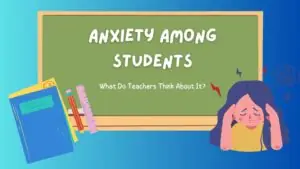

✅ AI Essay Writer ✅ AI Detector ✅ Plagchecker ✅ Paraphraser
✅ Summarizer ✅ Citation Generator
Key Takeaways
- Student spending on course materials has reached a decade low, thanks to the shift towards digital resources and inclusive-access programs.
- Digital libraries offer the advantages of unlimited access and a diverse range of resources but require a stable internet connection and may present technical challenges.
- Physical libraries, while limited by operational hours and physical inventory, offer a serene study environment and the comfort of physical books.
The landscape of educational expenses is evolving rapidly. The latest data reveals a surprising development: in the 2022–23 academic year, average annual student spending on course materials fell to a mere $285, a drastic 57% drop compared to figures from a decade ago. This shift is suggestive of a growing preference for digital learning materials and a trend towards comprehensive access models in higher education.
The Decrease in Student Spending on Course Materials
A student’s budget for course materials, which includes everything from traditional textbooks to online resources, forms a significant chunk of overall college expenses. However, recent years have witnessed a steady decline in this specific area of educational spending. According to the Association of American Publishers (AAP), the cost of course materials has seen a reduction of a remarkable 57% since the 2012–13 school year, indicating a transformative shift in educational resource acquisition and utilization.
Spending on course materials for the 2022–23 learning period dropped to an all-time low of $285. This reduction parallels findings from a similar study by Student Monitor, which recorded average spending on course materials at $333—a substantial 41% decrease compared to a decade ago. These reports illustrate a consistent downward trajectory in the cost of educational resources, a trend noted by Lacey Wallace, a research analyst for the National Association of College Stores. She stated: “We’ve noticed a really consistent decrease in student course material spending over time…As the space shifts to digital, costs do decrease.”
Digital Dominance
The remarkable decrease in material costs can be largely attributed to the rise of inclusive-access programs. This model is designed to deliver all relevant course resources, including textbooks and digital materials, to students at the lowest market rate by the first day of classes.

“A lot of inclusive-access programs are digital first,” says Wallace, underscoring the increasing reliance on online and electronic resources in the educational landscape. Universities and higher education institutions are leveraging this digital shift to provide affordable, comprehensive access to course materials, leading to a notable decline in students’ educational expenses.
Digital Libraries vs. Physical Libraries
As we transition further into the digital age, the debate between digital libraries and traditional physical libraries intensifies. For college students juggling university responsibilities and grappling with academic costs, each option offers distinct advantages and drawbacks.
Digital libraries, for instance, allow for convenient, round-the-clock access to a vast range of resources including e-books, audio, and video materials. However, students need a reliable internet connection and may encounter technical difficulties. In contrast, physical libraries provide a quiet study space, professional assistance, and the tactile pleasure of physical books. However, they are limited by operating hours and the availability of certain resources.
Pros and Cons for College Students
| Digital Libraries 😄 | Physical Libraries 📚 | |
|---|---|---|
| Access | 24/7, from anywhere | Restricted by operating hours ⏰ |
| Resources | Wide range, quickly updated 💾 | Limited by physical inventory 📚 |
| Technical Issues | Can occur 🖥️ | Rare 💡 |
| Internet Requirement | Essential 🌐 | Not required |
| Study Environment | Depends on user’s location 🏠 | Controlled, quiet 🤫 |
The Verdict
The pivot towards digital resources and inclusive-access programs in higher education has sparked a considerable decrease in student spending on course materials. As the trend continues to gain traction, the cost of learning materials may continue to drop, potentially making quality higher education more accessible to all.
Read more:
Apprenticeships: A Rising Alternative to Traditional College Education in the US
Teachers as Mentors Are Vital To Student Success: A Comprehensive Study Proves
Students Make a Call for Enhanced Support for Multilingual Learners
Follow us on Reddit for more insights and updates.





Comments (0)
Welcome to A*Help comments!
We’re all about debate and discussion at A*Help.
We value the diverse opinions of users, so you may find points of view that you don’t agree with. And that’s cool. However, there are certain things we’re not OK with: attempts to manipulate our data in any way, for example, or the posting of discriminative, offensive, hateful, or disparaging material.